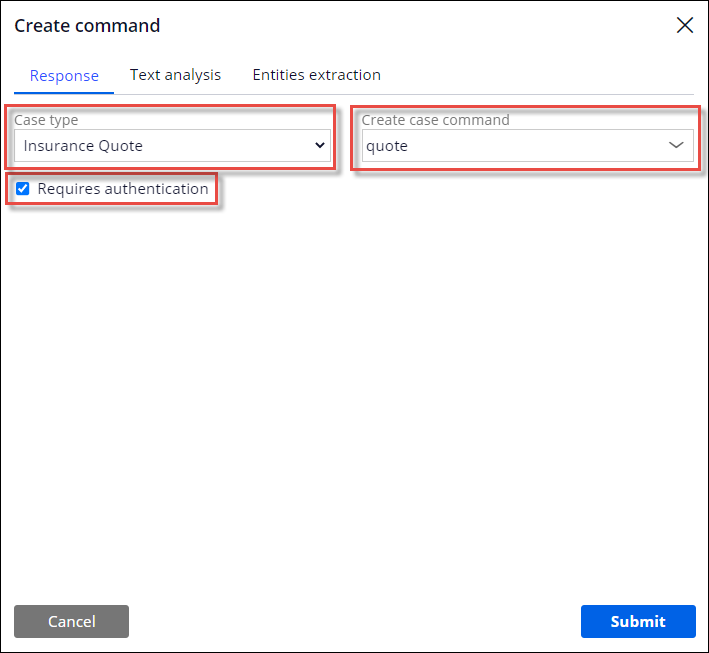Adding case commands for a conversational channel
By defining case commands in the system, you ensure that Pega Intelligent Virtual Assistant™ (IVA) can create top-level business cases based on detected user input. As a result, you improve the completion of business processes that are requested by users in your application. Based on the analysis of a text message or a voice command, the chatbot matches the best case command for a topic, the detected subject matter, and then automatically creates a corresponding business case.
The chatbot can also automatically extract entities from user input, and then copy them to case properties. For example, when a customer requests a car insurance price quote in an interaction with the chatbot, the system automatically creates a Car Insurance case and asks follow-up questions about the customer's car and credit history.All case commands and response commands that you define are topics.
- In the navigation pane of App Studio, click Channels.
- In the Current channel interfaces section, click the icon that represents your existing Digital Messaging, Legacy Webchat, or Alexa channel.
- In the channel, click the Configuration tab.
- In the Content section, select a method for modifying a
case command:
- To add a new case command, click Add case type.
- To edit an existing case command, click the Switch to edit mode icon for a case type.
- In the Case type list in the Create command window, select a case type that you want to create when the user enters a specific command.
- In the Create case command field, enter text that
triggers the system to create the case.Through text analysis, a user command provides the input that determines the best case command type to create by the IVA.
- If the case command requires authentication, select the Requires authentication checkbox.
- Optional: To add more case commands, repeat steps 4 through 7.
- Click Submit.
- Click Save.
Previous topic Adding a conversational channel to a case type process Next topic Defining response commands for a conversational channel

